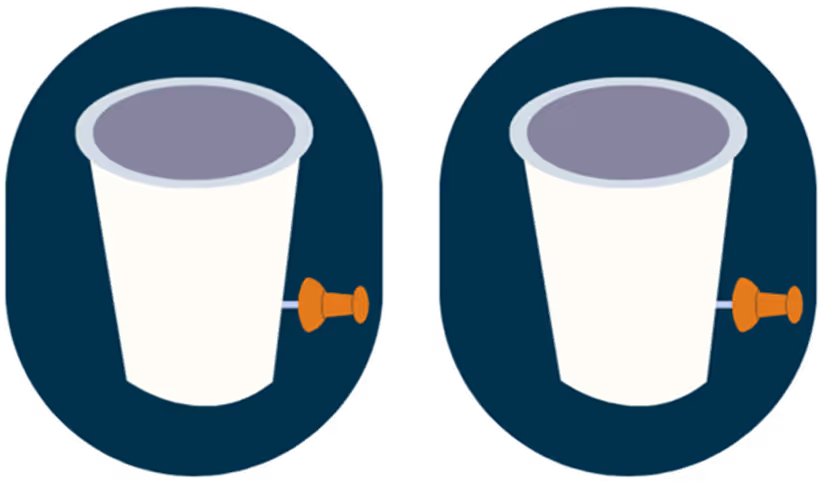

When we look out at the ocean, or any big body of water, you might think the only moving water is the waves on top. But, water is moving under the surface too! We call this moving water below the surface, a current. There are many reasons why there are currents, but today we’re going to experiment with temperature and density.
Materials:
- 1 Clear Square Container
- 2 Paper Cups
- 2 Push Pins
- Red and Blue Food Coloring
- Room Temperature Water
- Cold Water
- Warm Water
- Salt
- Ice (optional)

Procedure:
1. Poke one push pin into the side of one paper cup about 2 cm from the bottom. Repeat this for the other cup. Leave the pushpins in the cups.

2. Pour cold water into one of the paper cups and leave just a little room at the top. Add salt and blue food coloring to this cup and mix it gently.

3. Pour the same amount of warm water into the other paper cup. Add red food coloring to this cup and mix it gently.

4. Place both cups into your clear square container with the push pins facing away from each other.

5. Fill the container with room temperature water. The water should be above the push pins but below the water level inside the cups.

6. Remove the push pins and watch what happens to the water inside the clear container. Remember, the blue water is cold and the red water is warm.

What’s happening? Water separates based on temperature and density. Cold, salty water is more dense than warm water, causing it to sink down. You can see this clearly since the colors do not mix. Density is how much stuff is packed into a certain space. The denser something is, the heavier it will be.
In the ocean, cold water is denser because all the little tiny pieces of water, called molecules, move slower and pack tighter together than hot water. Salt water is also more dense than fresh water because of the extra salt molecules.

Ocean currents occur when cold water sinks to the bottom, and warm water floats to the surface. As warm water approaches the North or South Pole, it starts to get cold, and sinks to the bottom of the ocean. As cold water heads towards the equator it heats up, and starts to float to the surface. This pushes and pulls the water all across the Earth.
